Jesse James Chisholm began his career in visual effects in 1997 at Digital Domain. After working there for over 19 years, he joined Marvel Studios in 2016. He has worked on a number of films including Ready Player One, Captain Marvel, Avengers: Endgame and Black Widow. He won a BAFTA for best visual effects for Black Panther.
What was your feeling to go back to the Ant-Man universe?
I was excited to go back to the Ant-Man universe, I connect with him as a character he’s a man trying to find approval from his daughter and do right by her. I feel like we all can relate to that on some level. It was exciting to work on a project that was heartfelt and dealt with complex relationships.
How was this new collaboration with Director Peyton Reed?
Peyton reed is as passionate as they come, he only wanted what was best for his film. I was glued to his side through principal photography as there were so many things to consider in regard to characters and environments. Film sets are filled with noise, movement, questions that need to be answered, time constraint, lighting constraints, all sorts of concessions, and the most impressive thing about him is how cool he stays under this pressure, can crack a witty joke to take everyone’s nervous energy down, and then get amazing performances out of his actors. It was something to behold.
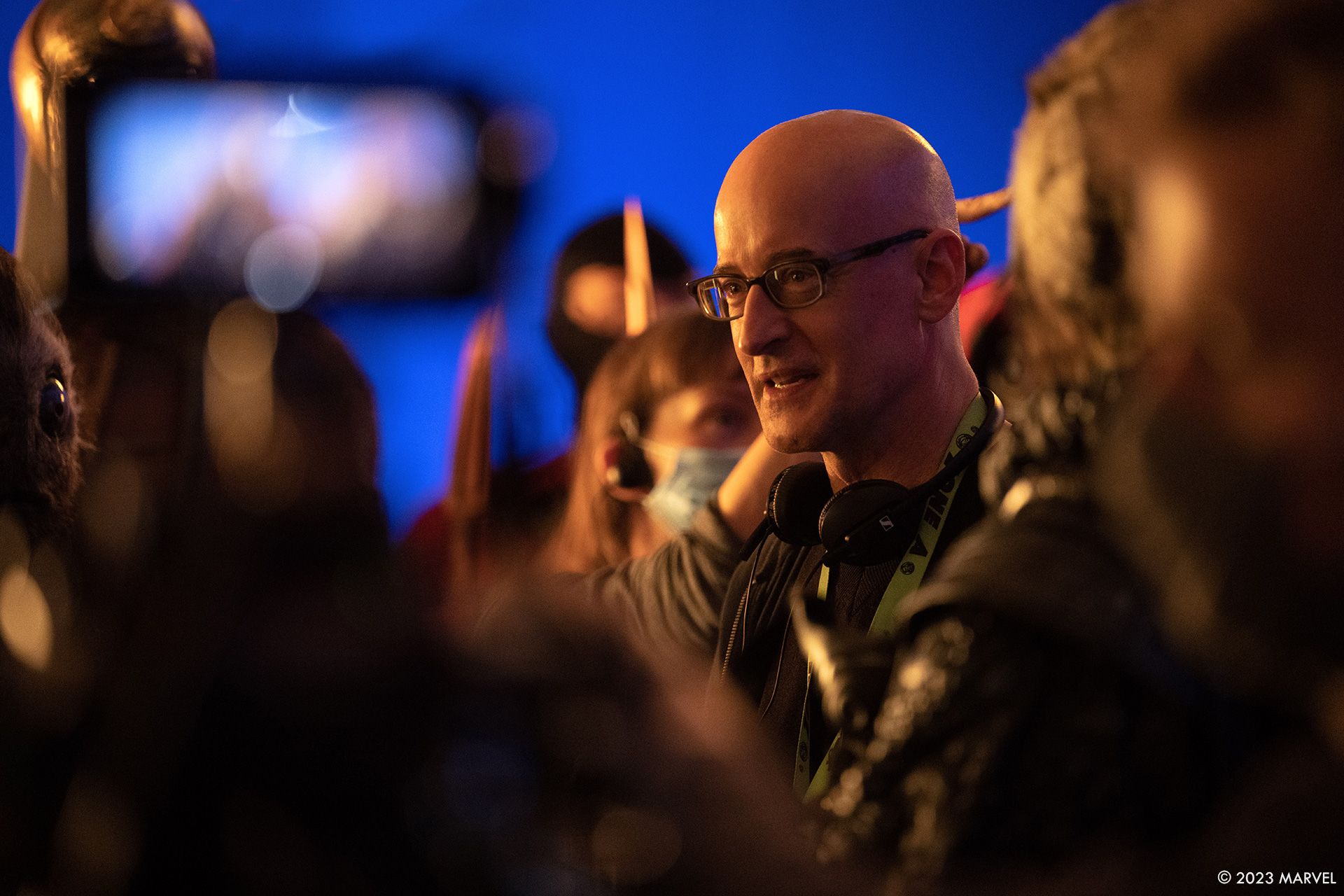
What was his approach about the visual effects?
He is an actor’s director, so he was concerned early on with how digital characters were going to emote and interact within a scene. I used Cyclops (AR) from The Third Floor with him, so we knew where characters and environments were at all times. It helped to ground us and help us understand screen direction and the scale of everything around us.
How did you organize the work your VFX Producer?
Fiona Campbell Westgate and I broke the film down several times keeping an emphasis on delivery timelines. We had a lot of shared shots and assets so we had to be meticulous when mapping out which vendor built heroes, who was to ingest the hero assets, and coming up with milestones to make sure all vendors were fed on time. It proved challenging as she and I always wanted to play to our vendors strengths to get the best work out of them.
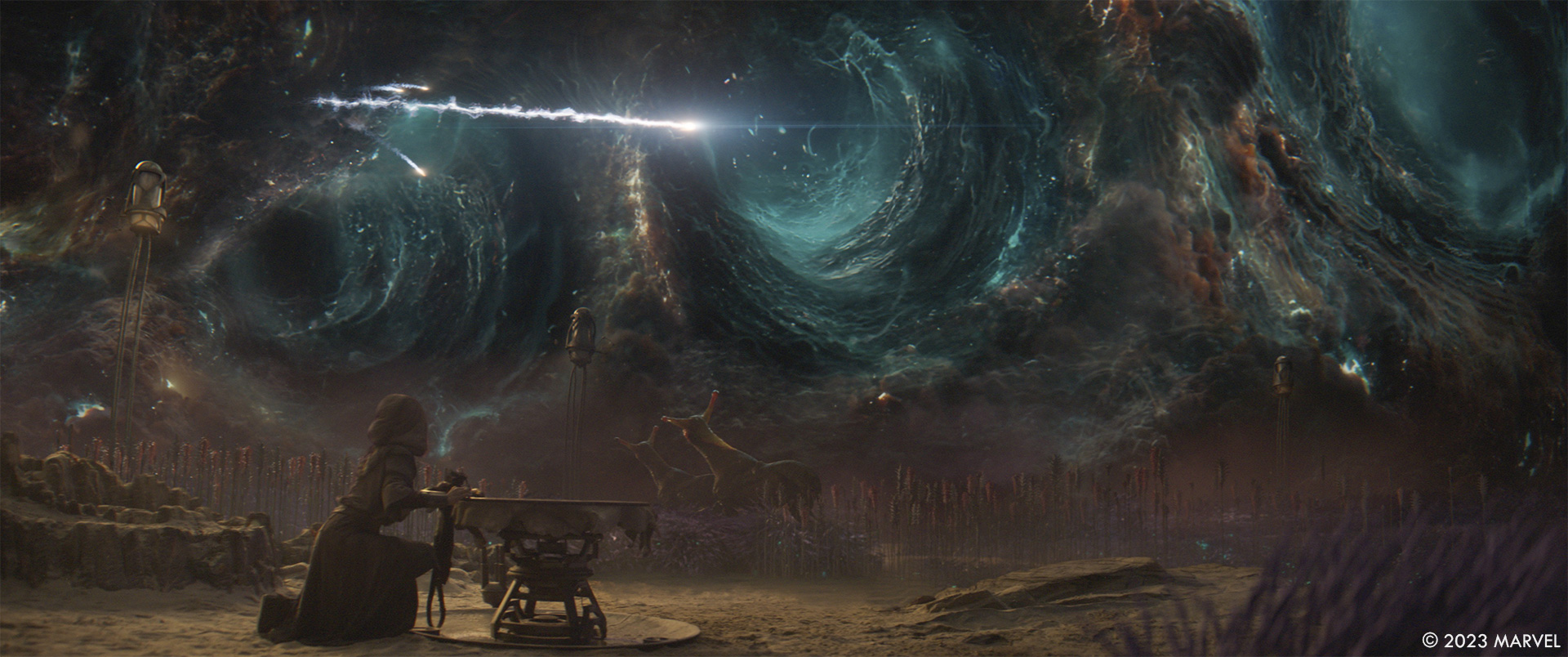
How did you choose the various vendors?
I have relationships with several Supervisors that I want to continue working with, or Sups that I’ve always wanted to work with. You start there and hope it works out timing wise for the facility. There are many nuances that go into the partnership between the client and production side supervisor, so I wanted to make sure that these were people that I respected and had a mutual trust with.
Can you tell us how you split the work amongst the vendors?
At the end of the day, we ended up using sixteen vendors. Based on what these Vendors told the Studio they could handle shot and complexity wise, Fiona and I then looked at their strengths, specialties, supervision, and other shows that they had in house that could detract from the work on our show and awarded based on all these variables.
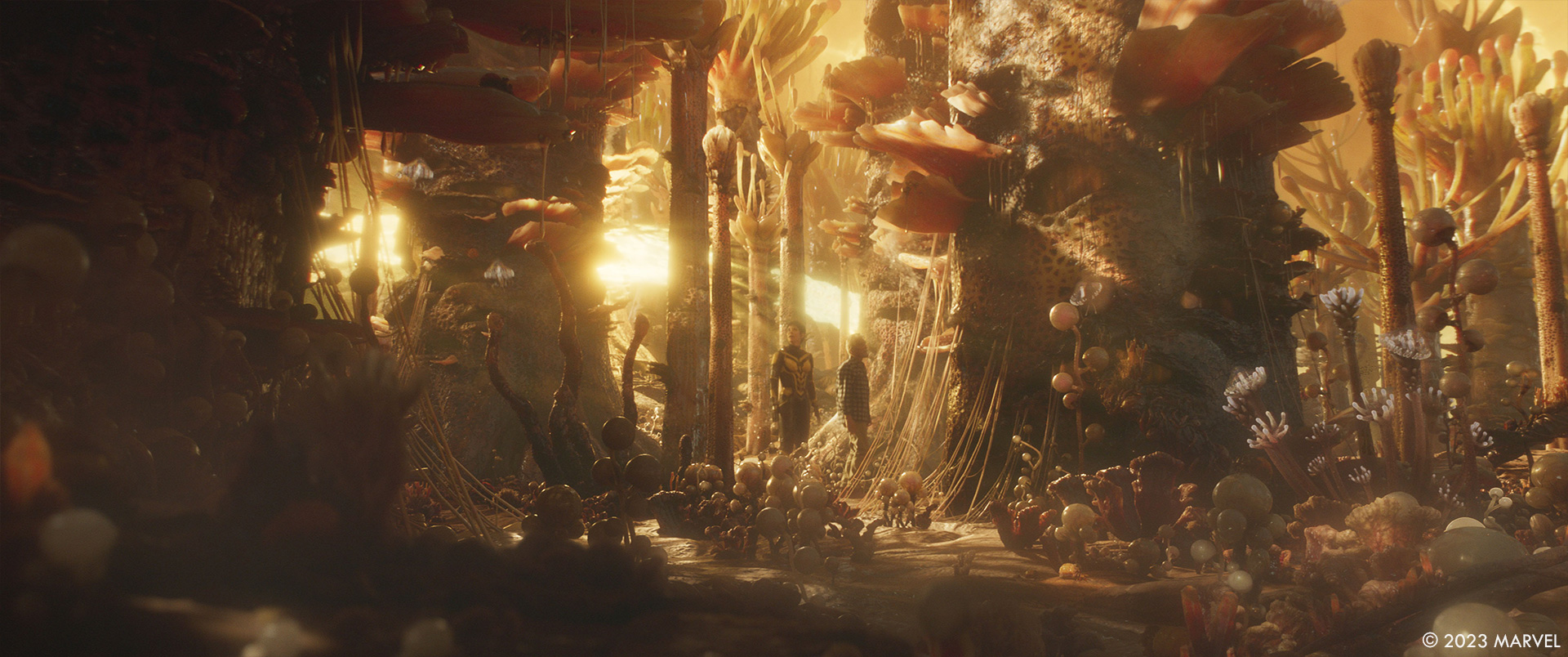
Can you elaborate about the creation of the various environments of the Quantum Universe?
Will Htay, our Production Designer was an absolute beast. I feel fortunate that I had such a close working relationship with the Director, the DP, SFX, and the Production Designer. Ultimately, they were all forces for good in their approach towards visual effects. Rare to come by in my opinion. Will and I knew that it’s one thing to do a drawing but it’s another to realize it. His approach to the environments was thoughtful in that as wild as they were, they also had elements that were grounding.
When Kevin Souls, my Additional Supervisor and I spoke about world building, we wanted to make sure we did justice to what Will, Peyton, and the Studio were liking and approving. There was so much that was to be constructed in later in CG that wasn’t being physically built, Nick Gottschalk, our Supervising Art Director and his team were instrumental in getting us materials that we could photograph and scan, so we had a photo-real base. Because there was so much to design and so little time VFX ended up bringing on Jamie O’Hara to help design some of our creatures. He created Veb, the creatures that attack Janet in the in the Quantum Wasteland where she meets Kang, and another talented human helping us shape this wild wildly visual film.
Peyton challenged everyone around him to come up with the most wildly visual things that we could think of, but he was also inspired by westerns, and part of great westerns is the journey in between the dialogue and these expanses. Monument Valley was such a strong character in one of the John Wayne movies that we were looking at, and so the question became, how do we how do we make these environments characters? How do we set them apart and make them tactile?
Peyton and I spoke about the fear of overstimulating our audience if everything was moving all the time. We were worried that if this were the case, by the time third act rolled around, you’d be visually taxed. We were really cognizant of that as we were creating these environments and tried to walk the fine line every pixel of the way.
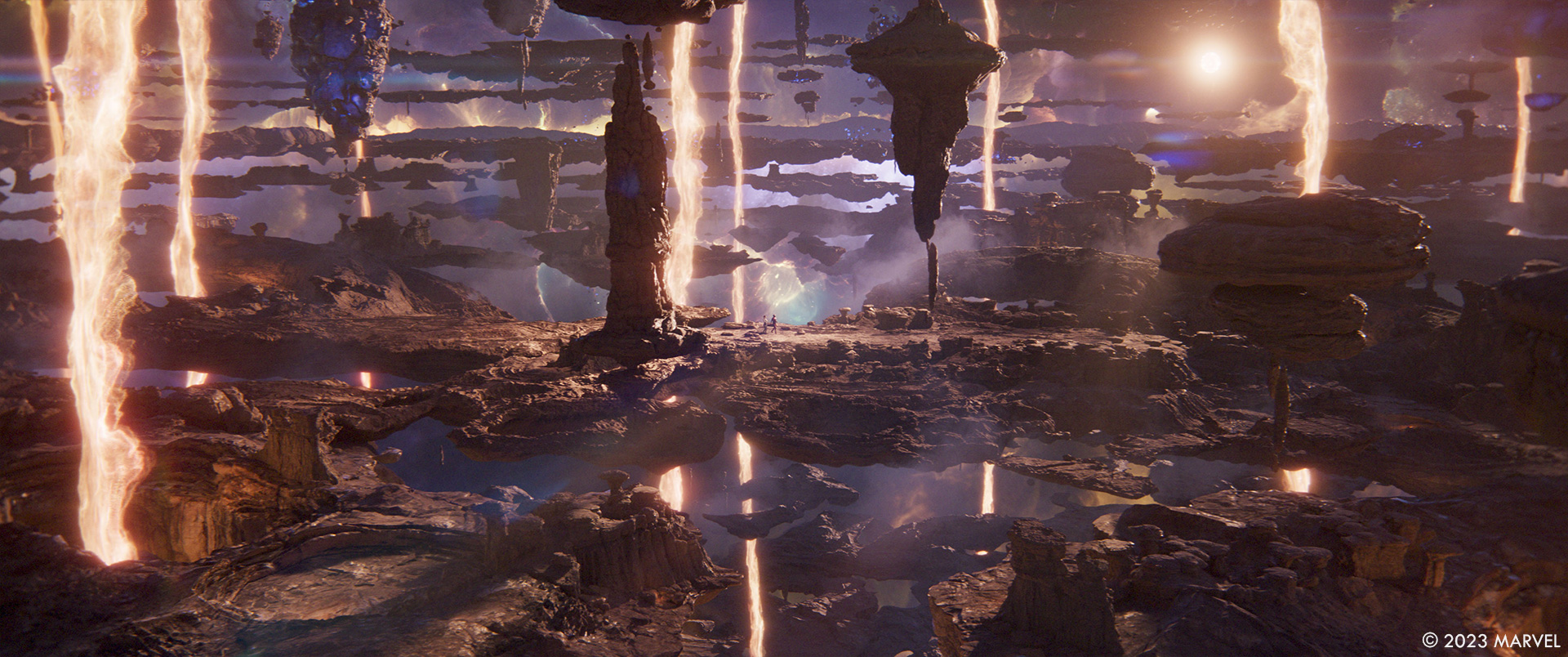
Many of the sequences were fully CG except for the actors. How did you deal with the challenge of light and space?
It doesn’t matter how good CG looks, if we have bad performances from our actors, it’s all for not. I was hyper conscience of how difficult it is acting against a void of blue with humans in grey fractal suits with eyeline backpacks, and tennis balls/laser pointers. We used an AR solution called Cyclops from TTF. A tech would line up the physical set to the crude CG extension in the iPad and we would load previs scenes with canned animation and hit play. We could then move around the space and witness where the action took place. It helped the actors understand where to look at any given time. My biggest peeve is bad eyelines, so we worked really hard to mitigate this.
We also implemented the use of Stagecraft. Peyton had incredible success with it on The Mandalorian and wanted to continue this language of film making. We ended up replacing portions of it, but it gave us a great base for lighting, eyelines, and gave the actors something to act against. The team at stagecraft was game to try new ideas and push boundaries, for one scene I was controlling the sun creature via a handheld device so we could illuminate and once again give the actors an eyeline to act against. The next thing we did for that scene was a real-time grow for Ant-Man. We accelerated a shrinking world around Paul to sell him growing to catch the sun creature and protect his daughter. It gave Peyton and Bill an idea on how and where to be to frame the incident. Super fun tech!
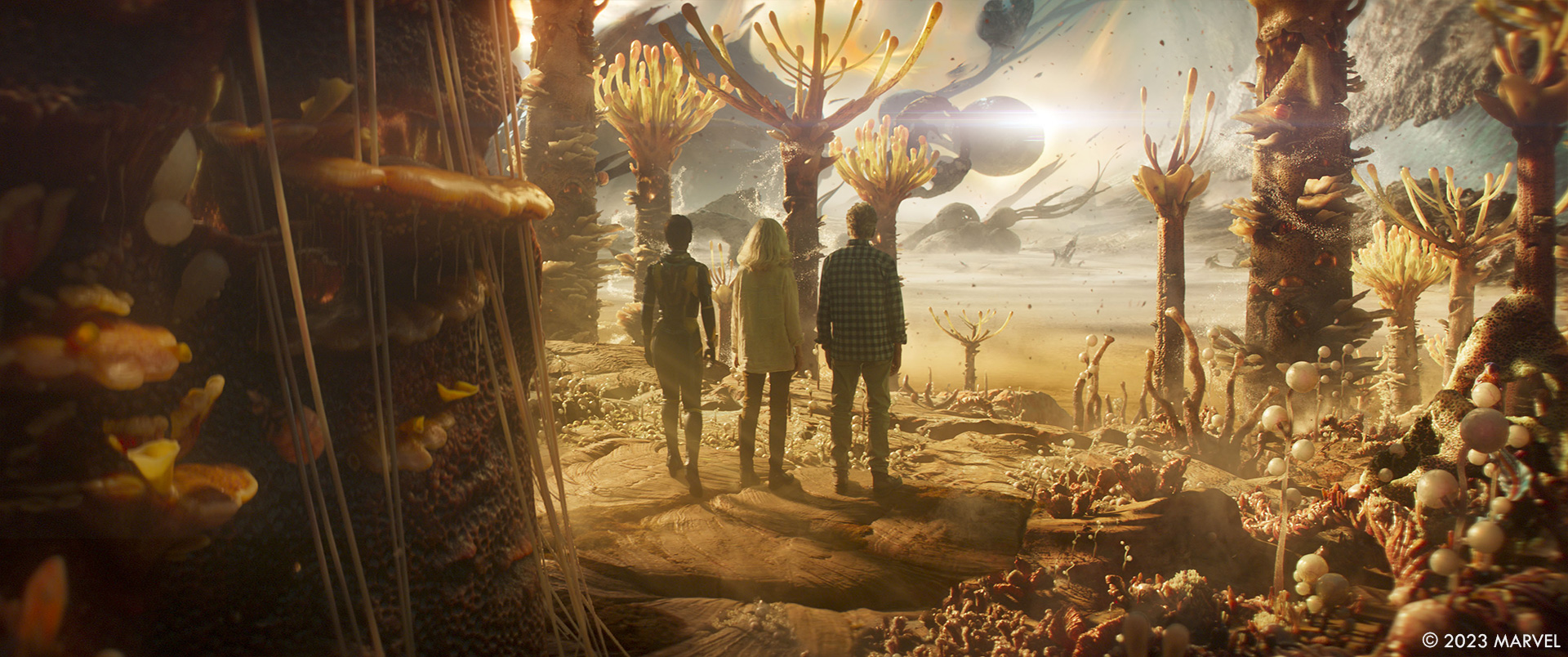
Which location was the most complicate to create?
Let me put it to you this way, there were no easy environments to build… The beauty of it was having vendors that really put their hearts and souls into their work.
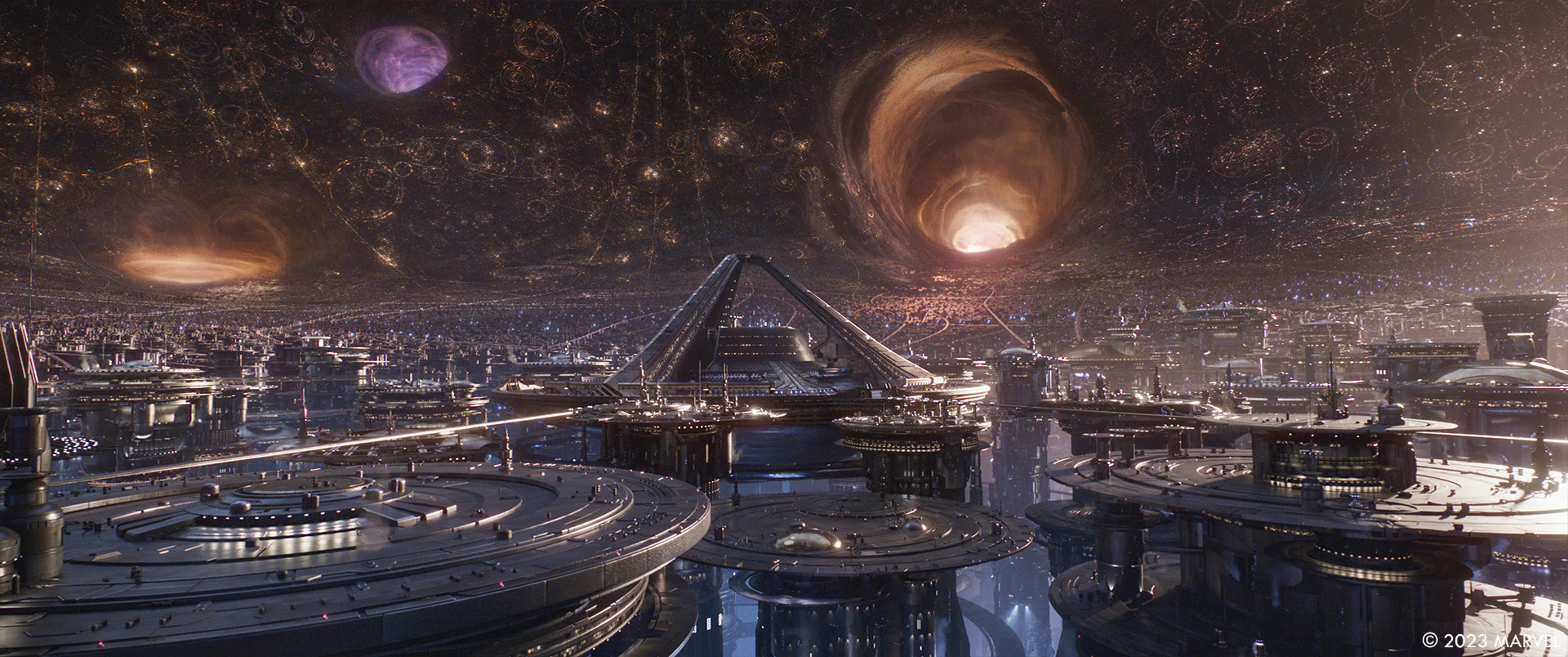
The movie introduces M.O.D.O.K. Can you tell us more about his creation?
M.O.D.O.K., Quantumania’s CG sidekick to Jonathan Majors Kang, was one of the more challenging characters to create for the film. The primary challenge was the need to accurately capture the nuances of actor Corey Stohl’s performance. As a central character in the film, it was crucial that his emotional scenes resonated with the audience, as well as his numerous comedic moments. The second challenge was to ensure that M.O.D.O.K. appeared as photorealistic as possible. This was particularly important because he was often shown in scenes alongside live actors, and he needed to blend seamlessly into each frame. Despite the numerous challenges, Dave Hodgins and his team at Digital Domain were able to bring M.O.D.O.K. to life and capture the essence of Stohl’s performance using facial motion capture. The rigging, modeling and animation teams were able harness Corey’s facial capture data to keep the nuance of the actors performance while still working within the confines of M.O.D.O.K.’s metal body.
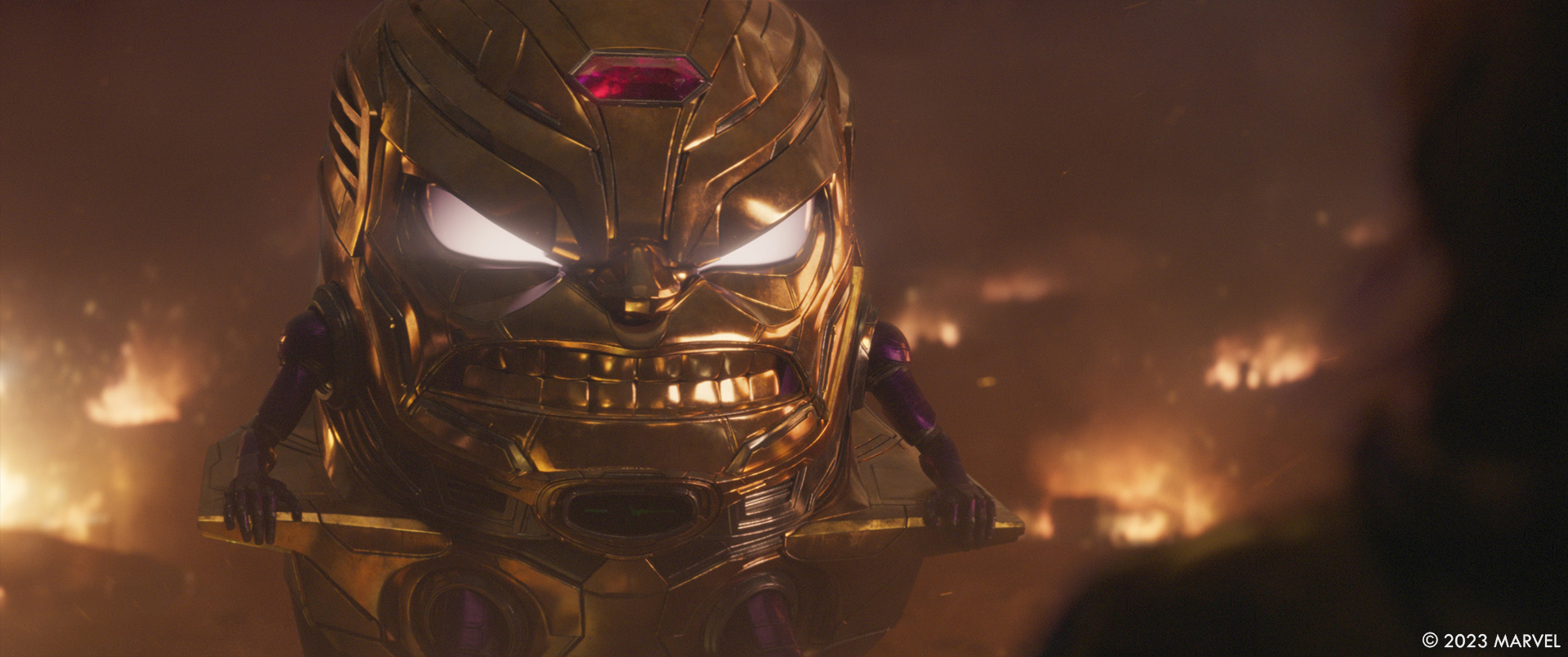
M.O.D.O.K. is a flying giant head. How did you handle the great challenge?
There were many unknowns when we began the process of creating a giant floating head confined to a metal chair. For example: Do the skin pores scale or get bigger? Or do they remain human scale and multiply? For eyebrows and stubble, is the stubble thicker or is there just more of it? How does a character’s eyes that are 2 feet apart converge when speaking to someone 18 inches from his nose? These were all questions that were answered through the iteration process. As I was seeing versions of animation and lighting on a daily basis, we were able to narrow in on the right balance of poor detail, stubble, and eye-line convergence. Ultimately, it always felt best to lean into the absurdity and humor of a giant floating head.
Can you tell us more about the filming process to have the face animations of M.O.D.O.K.?
The process of creating M.O.D.O.K. involved a complex motion capture session, which was scheduled after principal photography. Actor Corey Stohl drove M.O.D.O.K.’s performance with a full body capture suit and a set of head mounted cameras to record the face performance. However, the motion capture data still needed adjustments to account for M.O.D.O.K.’s unique size. Animation supervisor Frankie Stellato guided a team of animators to interpret Corey’s performances, often adjusting his body motion and gestures to account for the weight and mass of M.O.D.O.K.’s metal Body. Despite these challenges, the Digital Domain’s primary focus was on maintaining the highest fidelity possible to Stohl’s performance, particularly when it came to facial animation. The end result of this demanding process was a character that was able to sit into the live-action plates of the film seamlessly.
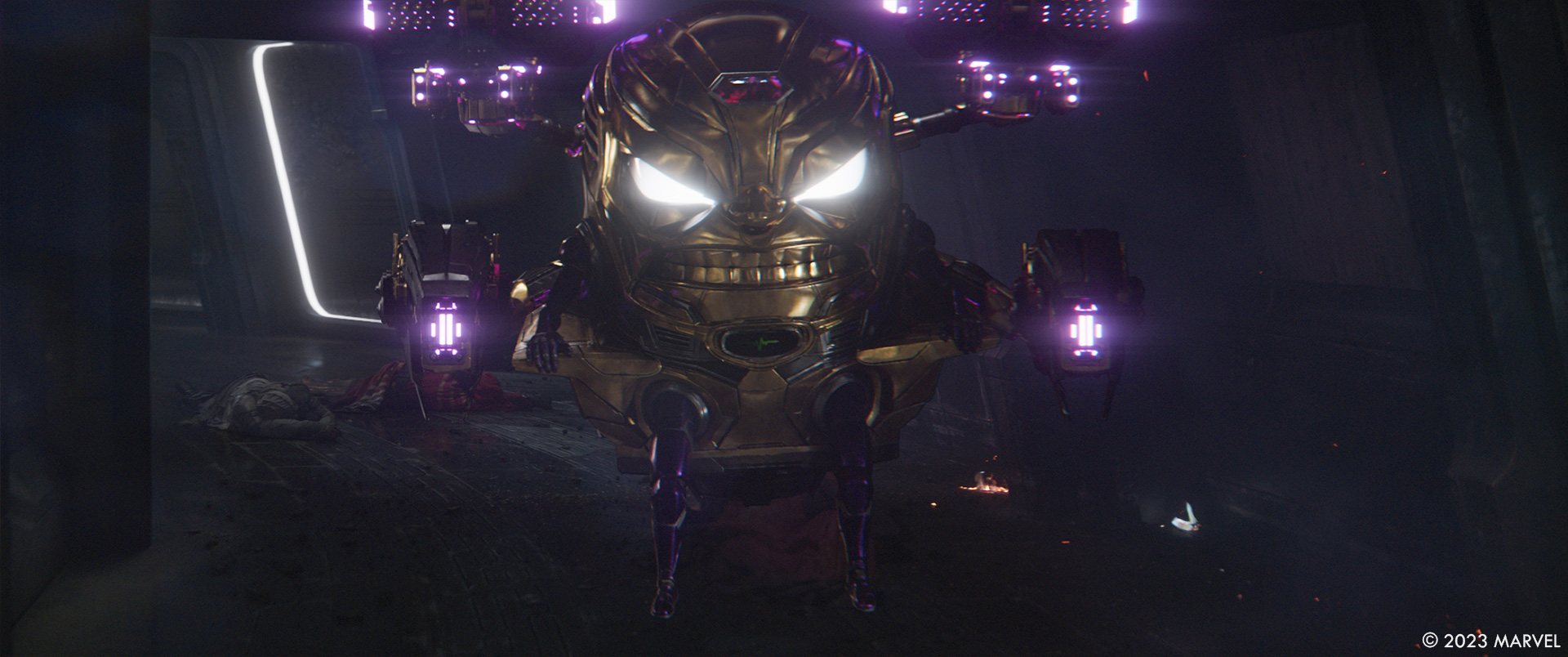
There is a crazy sequence featuring a tons of Ant-Man and the Wasp. How did you prepare a sequence like this?
Kevin Souls and I banged our heads together over and over trying to come up with the best shooting methodology to execute the massive ask within the given time frame. With Todd Constantine and James Willingham III at TTF, we techvis’d the entire sequence, used motion control, built massive steel caged jungle gyms, and employed Samuel Le and 20 of his stunt riggers/performers to pull of the sequence. Paul Rudd had recently shot a show where he played against himself as a twin which used lots of split screens. His prior experience helped us move at a faster clip and cover more ground. He was such a joy to work with on this.
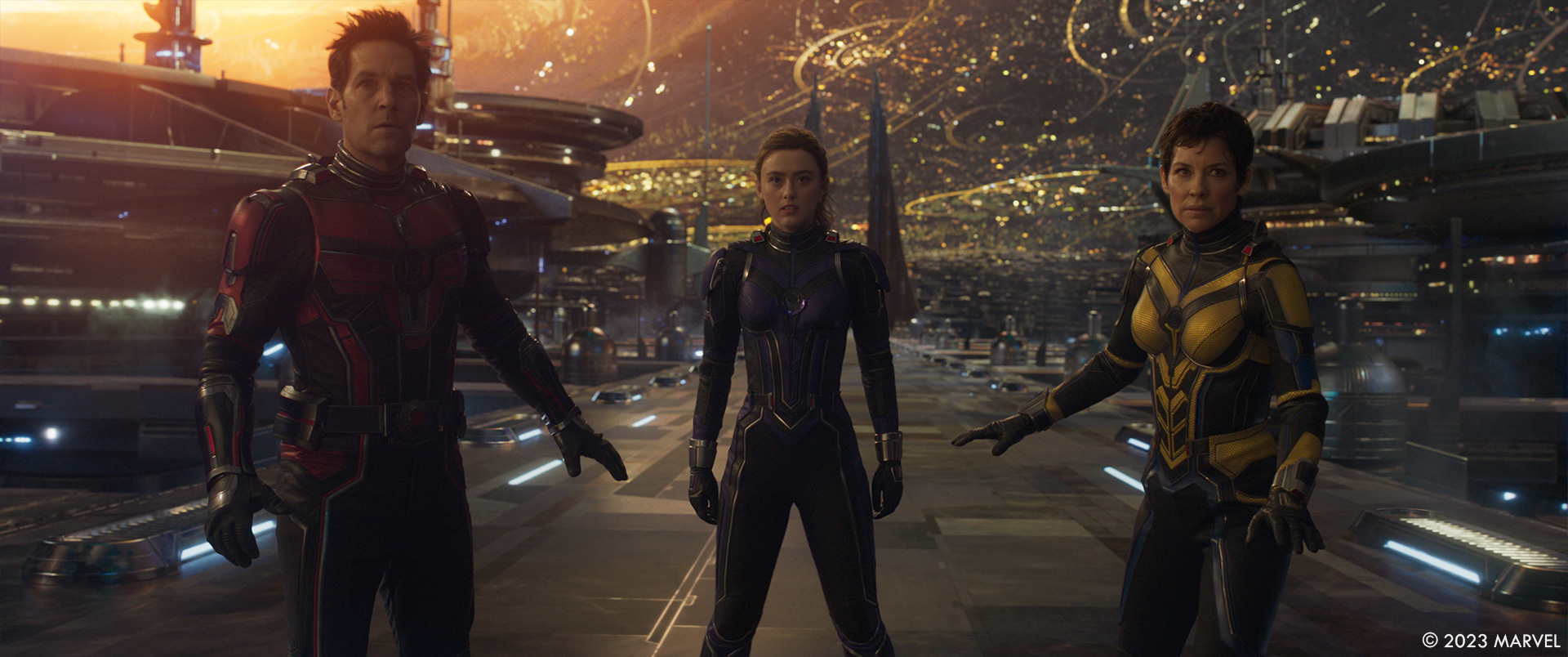
What was the main challenge with Giant Man and especially about his animation?
When creating Giant Man or shooting reference, we had a math equation for each of the different frame rates needed for any of his given scales. It was tough in post, even though Jason Greenbaum and Craig McPherson at Sony Pictures Imageworks honored scale as a starting point, it sometimes felt off so we would speed up or slow down to accommodate the rhythm of the cut.
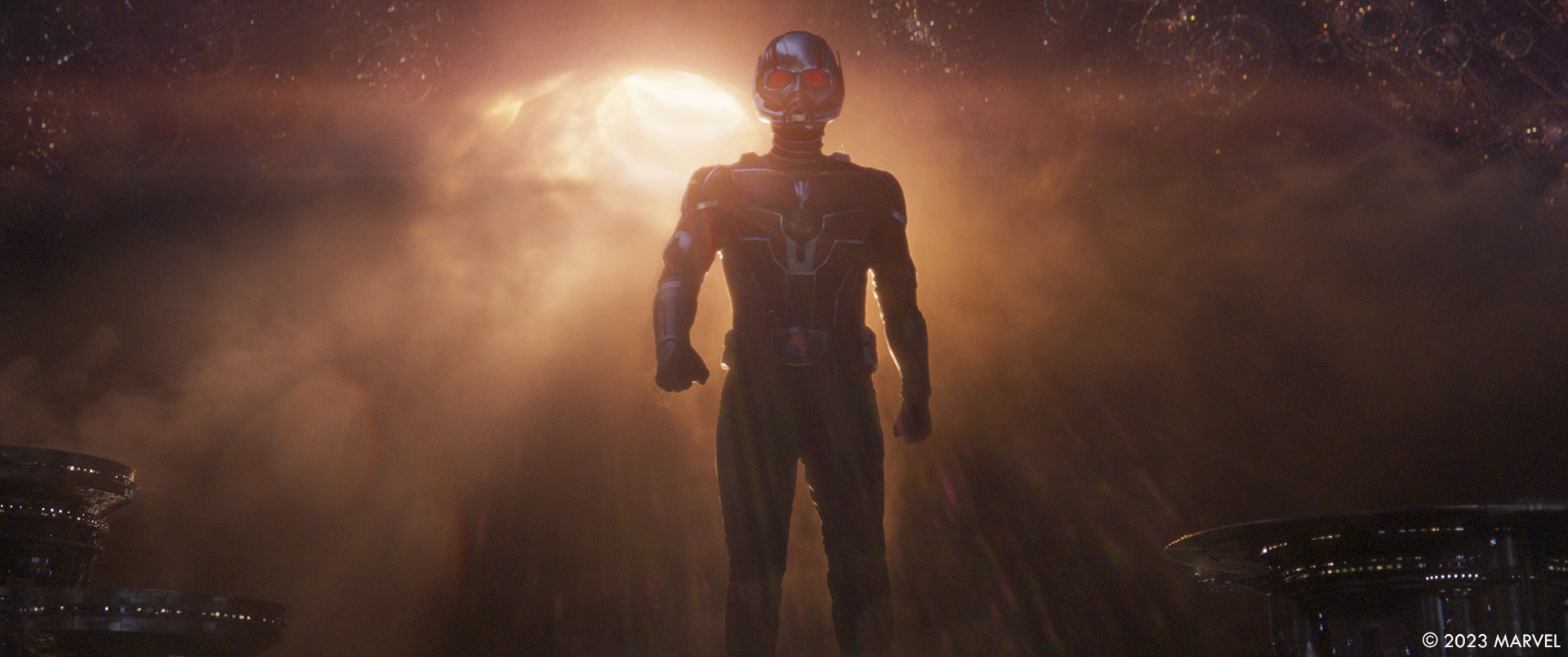
How did you work with the SFX?
Paul Corbould and his team are the best in the biz. They are so clever and collaborative. It was important for the actors to have someone to play against. Paul Corbould’s team built three M.O.D.O.K. rigs for the show, one full size on wheels so everyone could get a sense of how he would fit into the space. The second was a dual arm Steadicam rig that our actor Mark Weinman wore with a full-size face and steel hoop representing his circumference. It got to be pretty heavy by the time we added our cameras and batteries to capture reflections, so the SFX team build one last rig that was a lightweight face with two handles for quick stunt moments.
When we first meet M.O.D.O.K. in the Village Paul and his team put M.O.D.O.K. on a crane with lights on either side of him and loaded the stage up with smoke, Peyton was so pleased with the effect that it was final’d with no enhancement. Having these physical versions of M.O.D.O.K. ensured that we were able to properly frame a shot with M.O.D.O.K. in mind, while giving the other actors something physical to interact with. In post, we would then remove the stand-in M.O.D.O.K. from the plate and replace him with our cg character.
In the Guerrilla Village Paul and Chris Corbould blew everything up practically. They also had a secret recipe to give the explosions a colored tint. It gave an authenticity to the feel and got real performances out of our actors; it made me jumpy. Hahaha. Paul Corbould and Jason Leinster built countless gimbles for our show as well, we had Krylar’s full Yacht, Krylar’s fighter jet, Nomads on donut motorcycles and magic carpets, and a Trilobite that Michael Douglass, Michelle Pfeiffer, and Evangeline Lilly actually rode. I could go on and on…
Which stunt was the most complicated to enhance?
We did a oner in the Guerrilla Village where Scott and Cassie were running for their lives. Known internally as GRA1270. We had many complex actions that needed precise overlap of Special Effects from Paul Corbould’s team, total integration from stunts for timing, and built in stitch points to splice into in post.
Did you want to reveal to us any invisible or unusual effects?
No, I’m going to hang on to those few gems…
Which sequence or shot was the most challenging?
Hahahaha… All of it, just the sheer volume and trying to keep all the visuals at a high level.
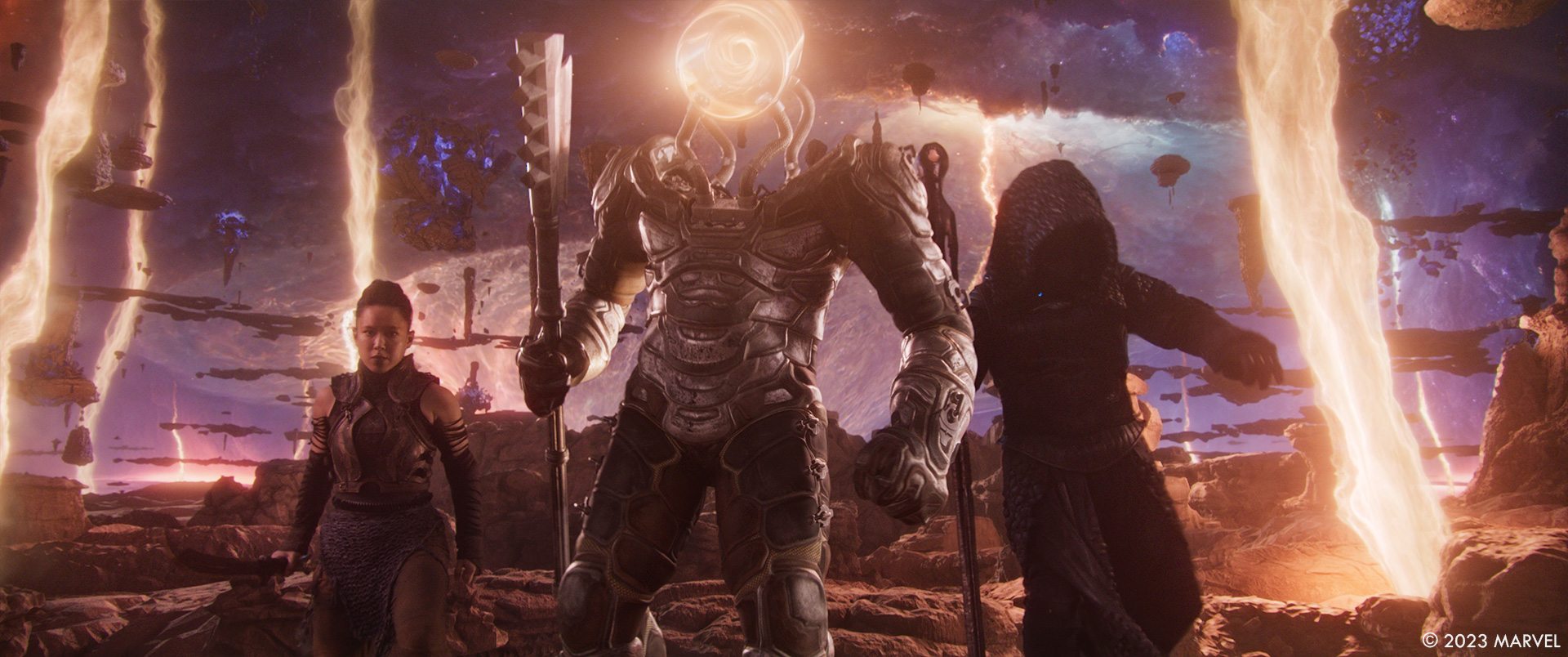
Is there something specific that gives you some really short nights?
All of it really! Being in my seat comes with many unseen challenges, I end up protecting my team, my vendors, my director, my studio, I often feel like Scooby Do when he tries to run, and all four versions of him are connected at his tail, and he get pulled back into himself. Don’t get me wrong, I love what I do and wouldn’t trade it for the world, I just want to recognize that it’s a tough position to be in.
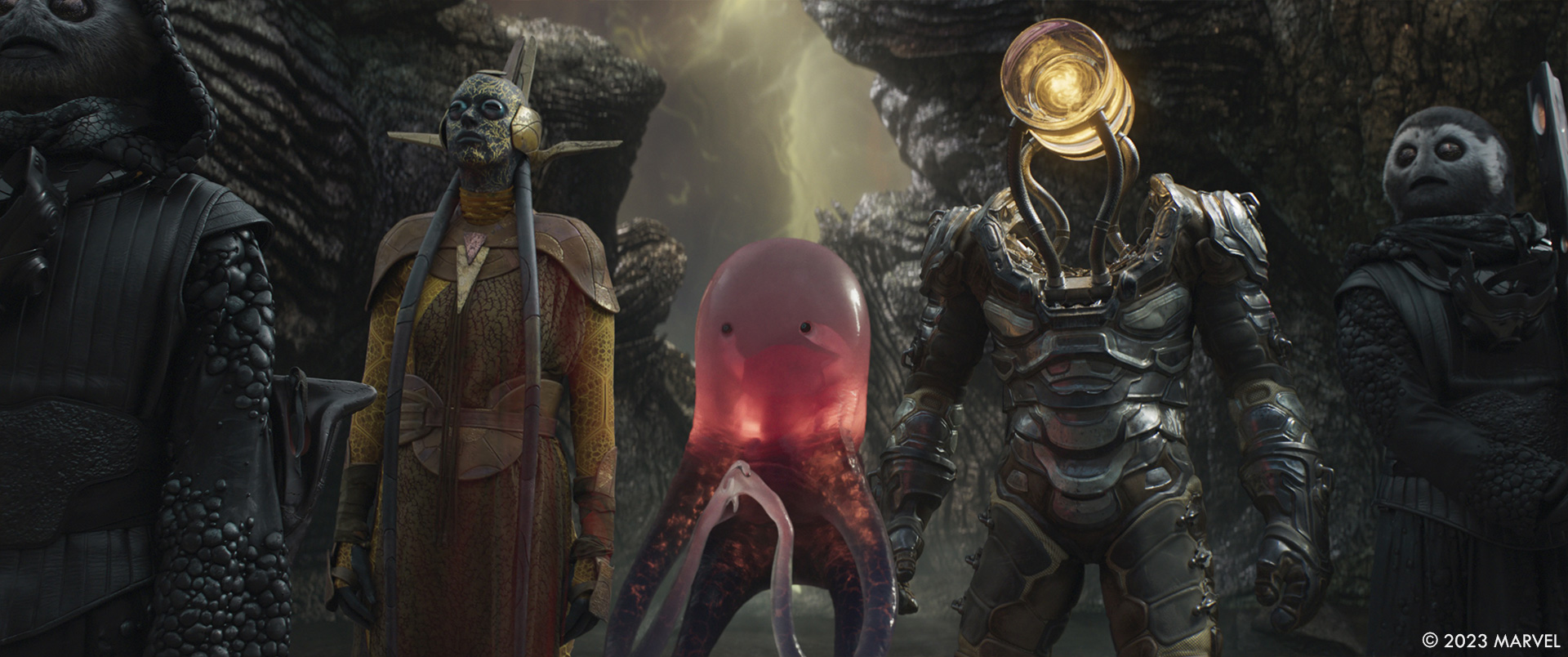
What is your favorite shot or sequence?
I don’t have one favorite book, film, song, on any given day they change… I feel the same way about this film.
What is your best memory on this show?
There is a lot of blind trust that comes with Visual Effects. When you get a first look of a comp it’s usually broken, slapped together with a rough environment and anim render as an idea to make sure we are going down the right path together. This times 300 +/- shots at any given vendor, and 3000 shots total on a film can be nerve racking as you try to build them up all together. Sometimes we get versions of these right up to the last minute which can be frightening. We all know the last 10% is always the hardest hump to get over to make things look photo real. This is where we must have faith in the sup/team on the other side, give concise actionable notes, and trust in the process. Our team worked hard bringing this film to life. All this to say, my best memory on the show was sitting in a movie theater at the end with a real audience and hearing them laugh, hoot, and clap, all while understanding what it really took to get to the big screen for them.
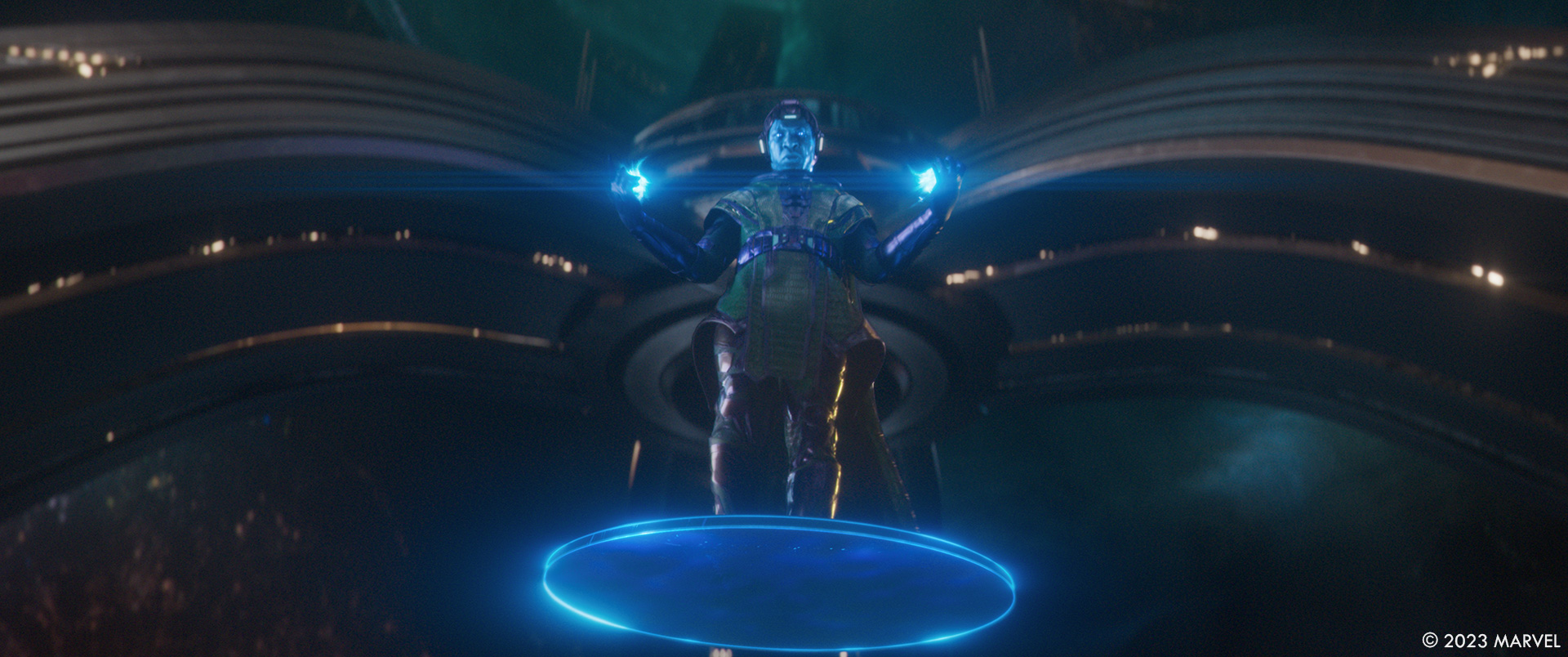
How long have you worked on this show?
August 2021 start date.
What’s the VFX shots count?
2813.
What is your next project?
I’m joining Francis Ford Coppola on Megalopolis.
A big thanks for your time.
WANT TO KNOW MORE?
Digital Domain: Dedicated page about Ant-Man and the Wasp: Quantumania on Digital Domain website.
ILM: Dedicated page about Ant-Man and the Wasp: Quantumania on ILM website.
MPC: Dedicated page about Ant-Man and the Wasp: Quantumania on MPC website.
Rising Sun Pictures: Dedicated page about Ant-Man and the Wasp: Quantumania on Rising Sun Pictures website.
© Vincent Frei – The Art of VFX – 2023





